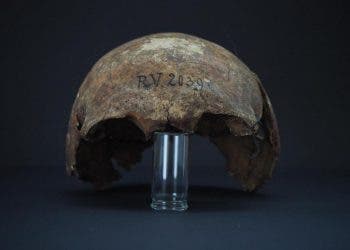
How would you react if you suddenly discovered a huge mass grave in the middle of your city? You might panic — unless you happen to be one of the archaeologists who recently unearthed hundreds of skeletons in Nuremberg, Germany.
A construction company was planning to build a new retirement home near the St. Sebastian nursing home in Nuremberg. However, before beginning the construction process, they decided to conduct an archaeological survey of the property.
Soon, city archaeologist Melanie Langbein and her team started excavating and what they came across was totally unexpected. The survey has revealed an ancient mass grave with over 1,000 skeletons of men, women, and children.
“A discovery like that has never happened before and quite honestly, no one had thought this to be possible,” Langbein said in a press release.
Her team believes that this finding could turn out to be Europe’s biggest-ever mass grave as the number of discovered skeletons may reach over 1,500 in the coming days.
“There was no indication to assume that there were burials on this field. I personally expect the number to be at 2,000 or even above, making it the biggest mass grave in Europe.” Julian Decker, a representative of the excavation company, told CNN.
Who killed all these people?
It was no tyrant ruler, war, or brutal invader, but bacteria that probably caused all these deaths.
Along with the skeletons, the archaeologists found silver coins, pottery shards, and a note originally written in 1634, mentioning a bubonic plague outbreak between 1632 and 1633.

The bubonic plague or black death is the most commonly occurring plague. It is spread by fleas that carry the bacterium Yersinia pestis. After entering the human body, Y. pestis invades the lymph node, causing severe fever, shivering, and swelling.
The disease can be relatively easily treated with antibiotics nowadays, but during the 17th century, people had no cure for the plague. Historical records suggest that Nuremberg witnessed a plague epidemic every 10 years from in the mid-1300s.
The note further reveals that this plague caused 15,000 deaths during the 1630s, making it possibly the worst outbreak. This would mean that it killed 30 percent of Nuremberg’s total population (estimated to be 50,000 at that time).
Out of the 15,000, about 2,000 were buried at a site that happens to be the same place where the excavation is ongoing, according to the note.
To further confirm the timing of death, Langbein and her team also employed radiocarbon dating.
They discovered that coins and other artifacts were from the 1620s, whereas the skeletons dated between 1474 and 1638, suggesting that their burials coincided with periods when plagues hit the city.
The note and radiocarbon dating thus confirmed that the skeletons were of people who died during waves of black plague.
A trial for both the living and dead
The archaeologists suggest that Nuremberg has ancient cemeteries specially for burying plague victims. However, they were found buried in stacks.
“This means a large number of dead people who needed to be buried in a short time frame without regard to Christian burial practices,” Langbein told CNN.
The arrangement of skeletons in the grave further reveals that the bodies were buried in a rush. Adults were stacked, and the children were fit between the adults to fully use limited space. This is possibly because the designated cemeteries were already filled due to the plague outbreak.
In the following years, the skeletons suffered further damage due to world war bombing and chemical waste from a nearby copper mill in the city. However, those who were alive during the plagues were also living lives filled with suffering. It was bad enough seeing loved ones dying, but this was happening against the backdrop of war.
Historical records suggest that along with the epidemic, Germany witnessed a series of military conflicts with other European countries during 1618 and 1645, resulting in poor social and economic conditions for people in Nuremberg.
“Nuremberg was surrounded by different troops and the population was living in quite dire circumstances,” Langbein said.
This mass burial site gives us a glimpse into a sad and difficult past. Still, it is a remarkable find. As they continue to excavate, who knows if more notes and fragments of a lost history can be unearthed.






